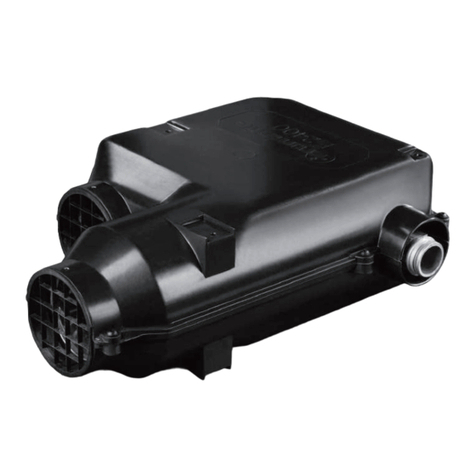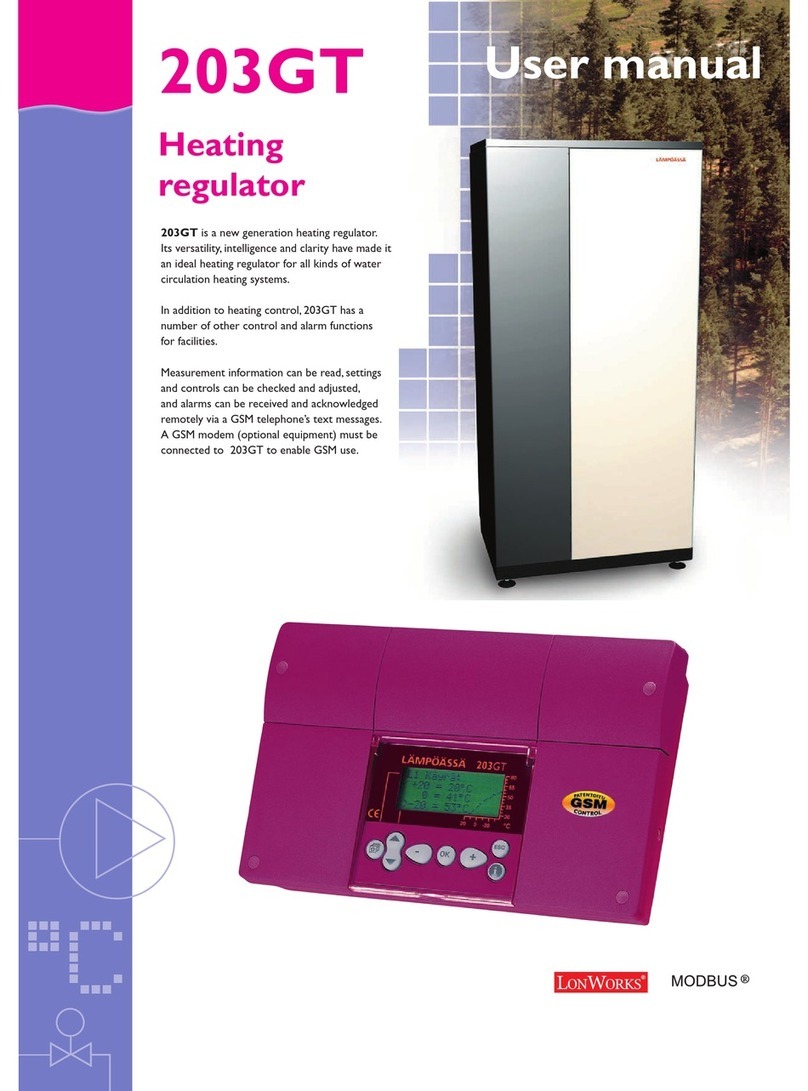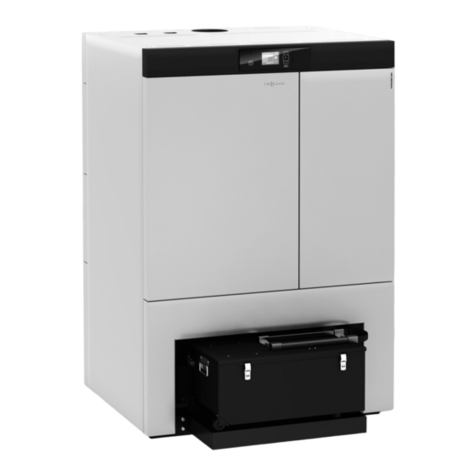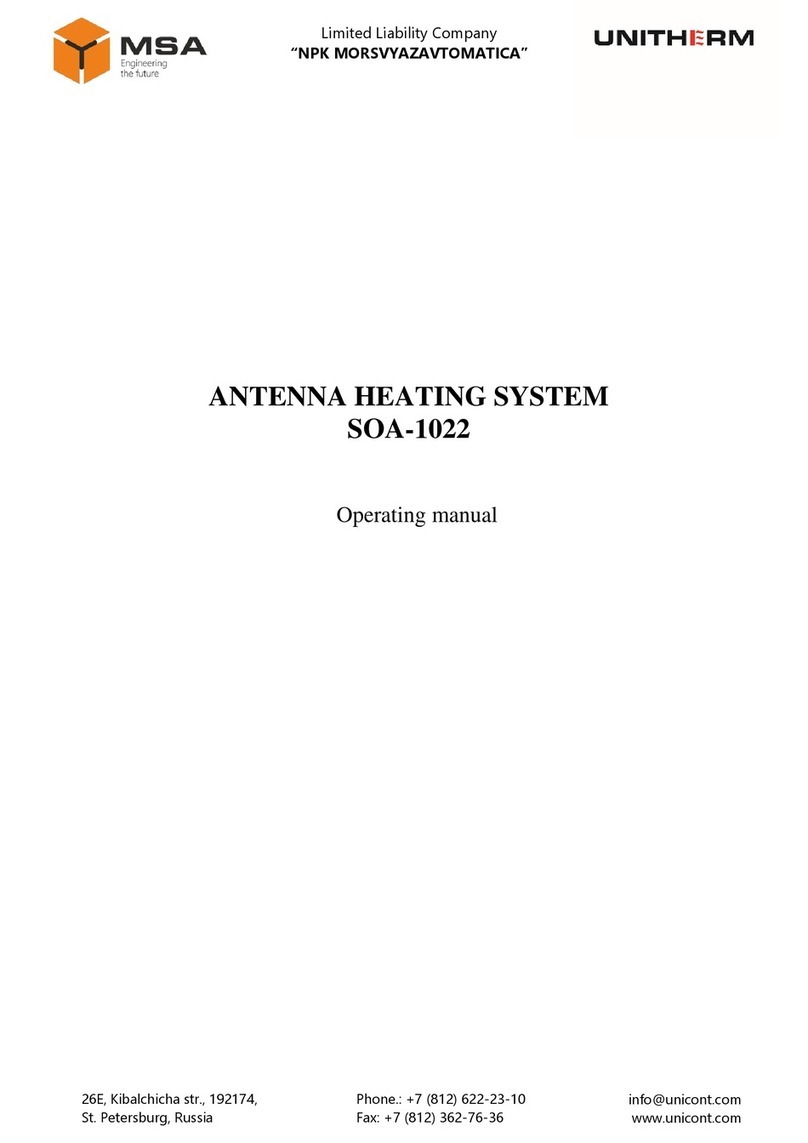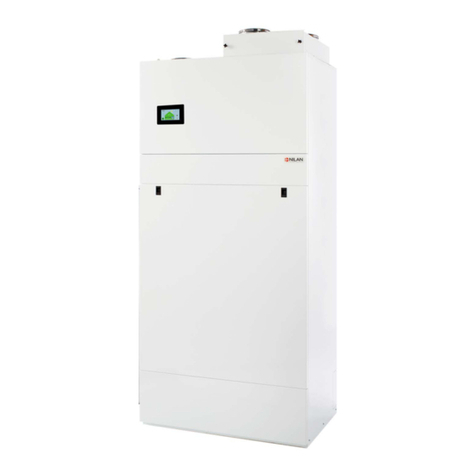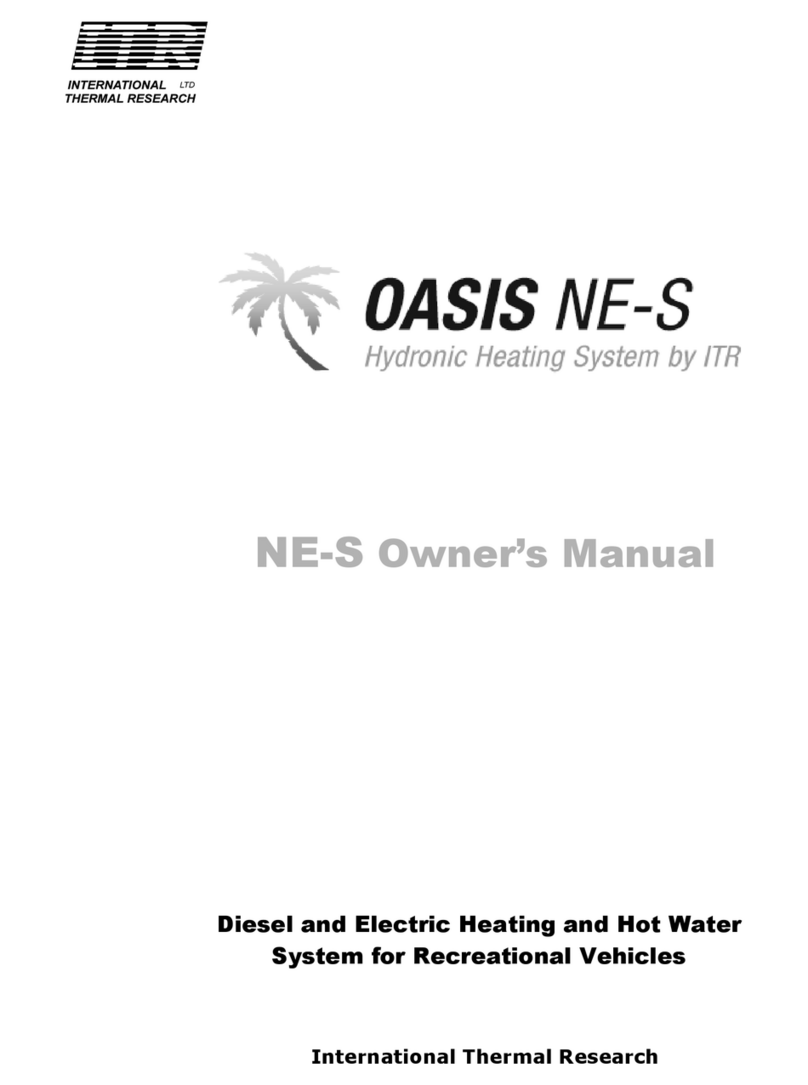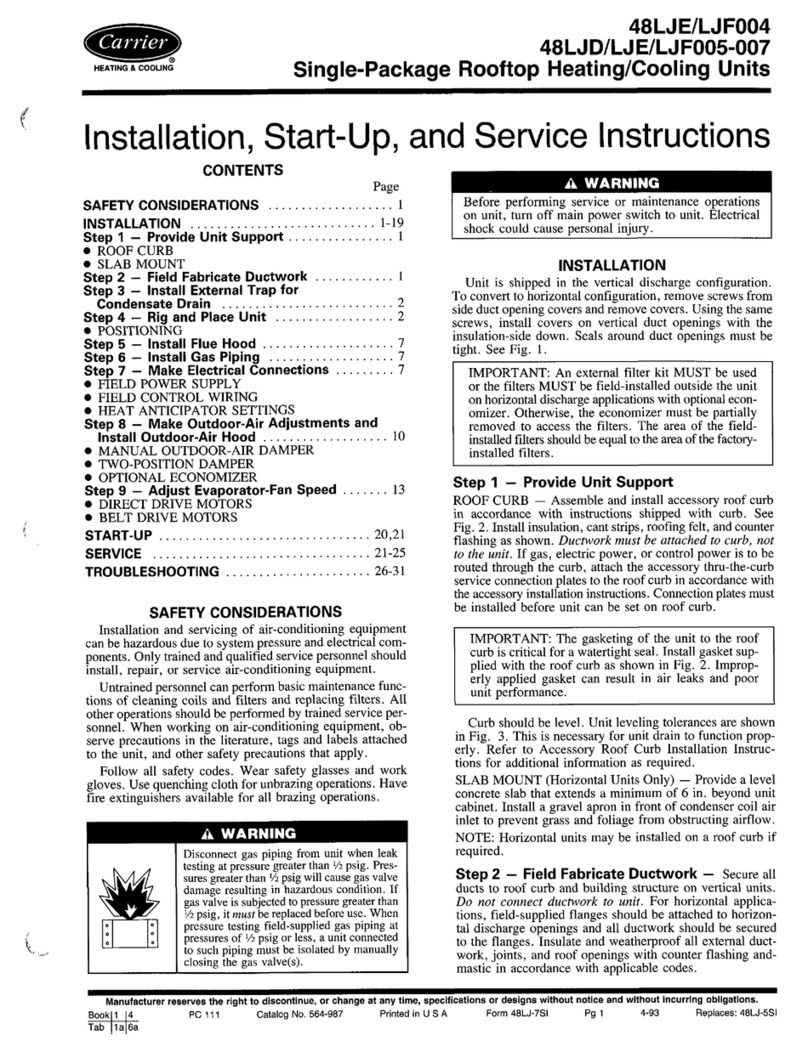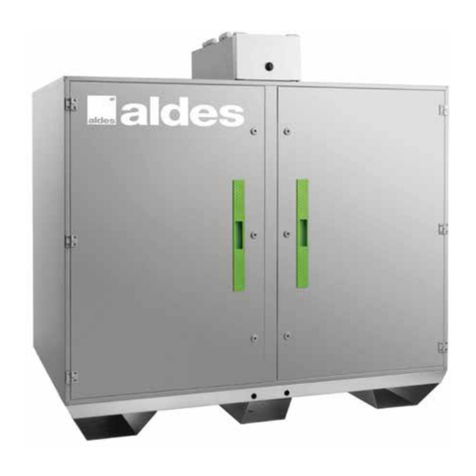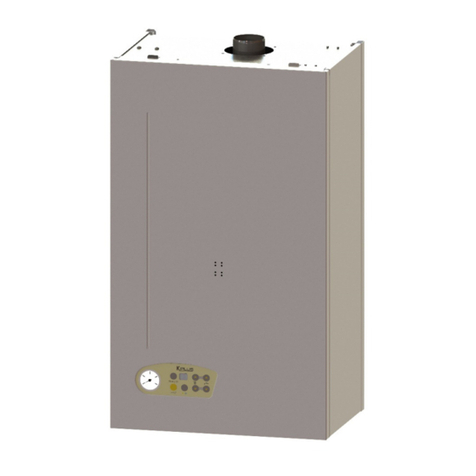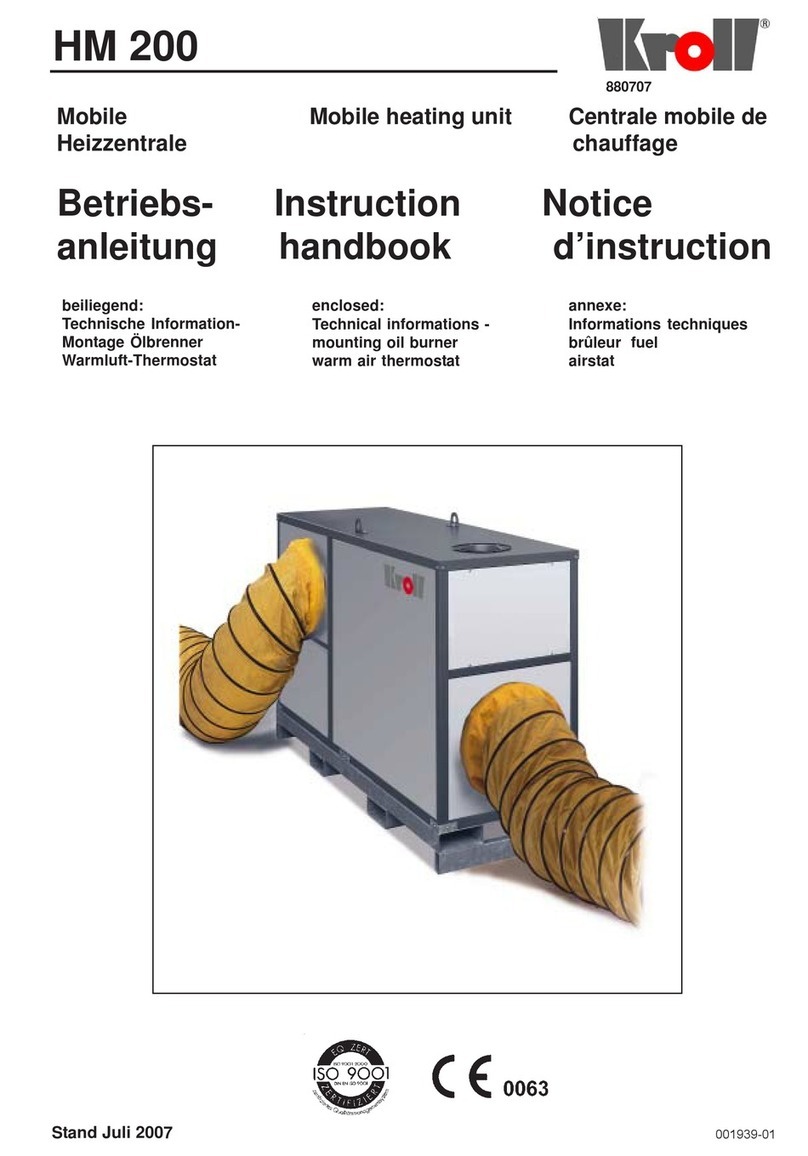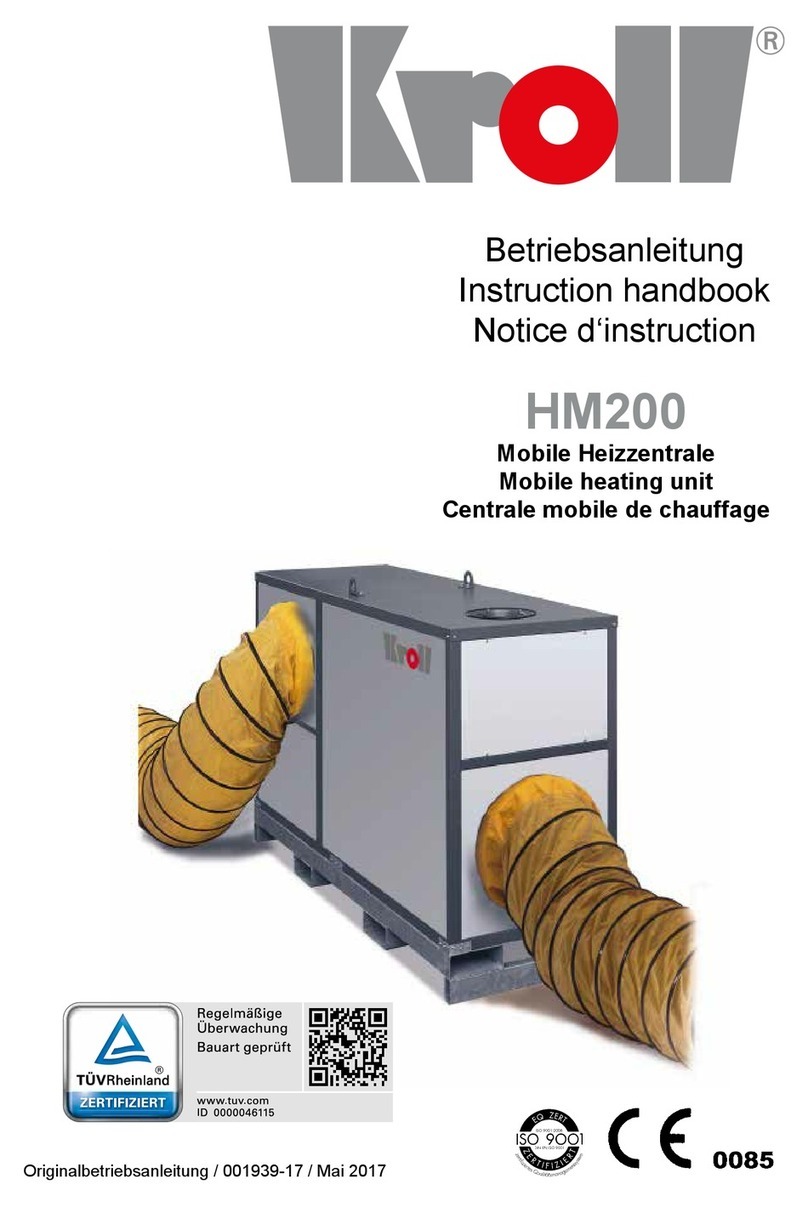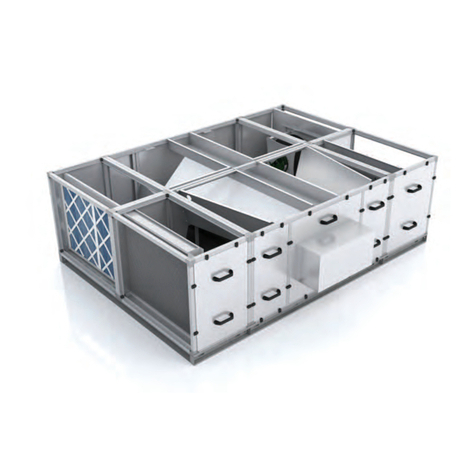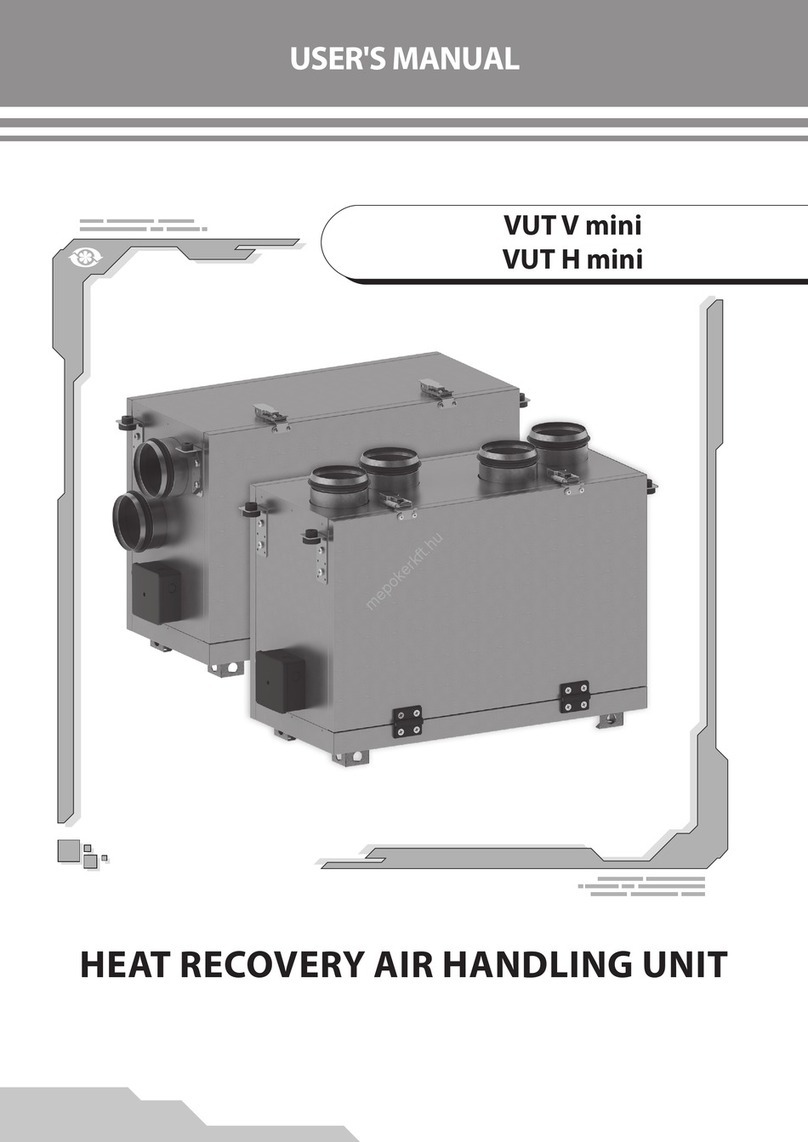
4
1.MAIN FEATURES
1.1 CLASSIFICATION OF EQUIPMENT
The fundamental elements that make up the HUB RADIATOR PLUS
/ PLUS SOLAR system are:
1) Electronically controlled external moto-evaporator dened as:
“Split air-water monobloc heat pump”, powered by R410A refrigerant
uid with ON - OFF compressor or INVERTER.
2) Indoor unit dened as a circuit accumulator radiator closed with
high efciency that keeps the technical water completely separate from
the sanitary water and is made through 2 sequential accumulators
with an octagonal section, inside which all the copper exchangers
are positioned.
Sizes from 250 liters - 400 liters
1.2 CERTIFICATIONS - CE MARKING
The patented HUB RADIATOR PLUS / PLUS SOLAR system complies
with directives 97/23 / EC and 98/37 / EEC.
They also comply with the provisions of the following directives:
73/23 / EEC, 89/336 / EEC, as amended by directive 93/68 / EEC.
The indoor unit of the HUB RADIATOR PLUS / PLUS SOLAR system
has been designed to be installed only and exclusively inside buildings
or on a special external niche that is thermally insulated and protected
from atmospheric agents, if this indication is not respected, any type
of warranty is void.
1.3 CONSTRUCTION FEATURES
All the machines are equipped with a microprocessor for controlling
and adjusting the operation and safety of the units.
Thanks to the patented direct exchange condensers, the products of
the HUB RADIATOR PLUS / PLUS SOLAR series are able to reach
high standards of energy efciency and SCOP.
Other construction features:
- the cabinet covering the outdoor unit is made for all models in sheet
metal pre-painted with epoxy powder. The compressor compartment
is completely isolated from the air / refrigerant exchanger
compartment; this allows to better protect the electromechanical
components.
- the compressor is of the high efciency rotary type, operating with
R 410A refrigerant, mounted on elastic anti-vibration supports,
driven by a single-phase electric motor for all models;
- the air / refrigerant gas exchanger is made with copper pipes and
aluminum ns blocked by mechanical expansion of the pipes, with
a large heat exchange surface;
- the fan unit consists of a helical fan driven directly by single-phase
asynchronous motor with internal thermal protection. The fans are
equipped with a safety protection grid;
- the DHW rapid exchanger, is made of copper directly immersed in
the technical water of the indoor unit with the FIRST IN - FIRST
OUT method, so as to eliminate the problem of legionella;
- the refrigeration circuit and the connections between the individual
components are made of copper tube specic for refrigeration. The
lamination member, the cycle inversion valve and the liquid
separator are part of the refrigeration circuit;
- the electrical command and control panel is directly positioned
inside the cover cabinet, above the expansion tank.
- the microprocessor control system with keyboard is located on the
control plate accessible directly on the front of the cover cabinet,
and can be remotely operated using the appropriate remote control
and command panel, available as an accessory, to be installed on
the wall or recessed ;
- the indoor unit is supplied complete with all the appropriate
internal copper exchangers, auxiliary auxiliary back up and
emergency resistor, freon connections, DHW connections, air vent
jolly valve, safety valve, lling cock, pressure gauge, diverter valve
to give priority to the domestic hot water, ow switch, electronic
circulator, expansion tank, temperature probes.
1.4 CONTENT OF THE PACKAGING
The device is shipped on wooden pallets, with extruded expanded
polystyrene protections and wrapped in a layer of plastic fabric with
air bubbles.
The identication data of the appliance are shown both on the label
on the packaging and on the technical data plate applied inside the
cover cabinet.
Do not remove the technical data plate for any reason, as the references
it contains are necessary for any maintenance interventions.
Inside the packaging there is also an envelope containing this manual
and the warranty certicate, which must be delivered to the owner
of the device so that he can keep them carefully for any future use
or for consultation.
1.5 STANDARD EQUIPMENT AND ACCESSORIES SUPPLIED
ON REQUEST
The wide range of standard equipment and accessories available on
request allow optimal use of all the functions of the machines and the
system to which they are served.
1.6 FIELD OF USE
The appliances designed and manufactured for heating water in
hydronic air conditioning systems and to produce DHW must be
used only for this purpose, in relation to their technical specications
and performance.
The quality and dimensions of the materials used guarantee a good life
time and are suitable for the operation of the devices both as a whole
and in their individual components, subject to an installation carried
out in a workmanlike manner and under conditions of mechanical
stress. chemical and thermal corresponding to a suitable use.
WARNING! All uses not expressly indicated in this manual are
consideredimproperandarenotpermitted;inparticular,theuse
of the equipment in industrial processes and / or installation in
environments with a corrosive or explosive atmosphere is not
envisaged.
The manufacturer declines any responsibility for damage to
people, animalsor property resultingfrom noncompliance with
the instructions in this manual, from modications or tampering
with the product, from installation, adjustment, maintenance
errors and from improper use. Failure to comply with what is
indicatedinthismanualalsoresultsinforfeitureofthewarranty
conditions.
1.7 SAFETY RULES
WARNING! Installation and maintenance must be carried out
exclusively by specialized and specially authorized personnel.
The connection to the power supply must be carried out in
accordance with current national plant standards.
During installation and maintenance operations, it is always
necessary to operate in conditions of maximum safety, follow
the instructions given in this manual and any warning labels
applied to the product.
Respect the installation and operating limits indicated in
this manual, never modify the internal electrical wiring and
refrigeration pipes, do not modify or disable the safety and
regulation devices.
Beforeanyinspectionormaintenanceoperation,oanythingelse
involves access to the internal of the appliance, disconnect the
general power supply.
